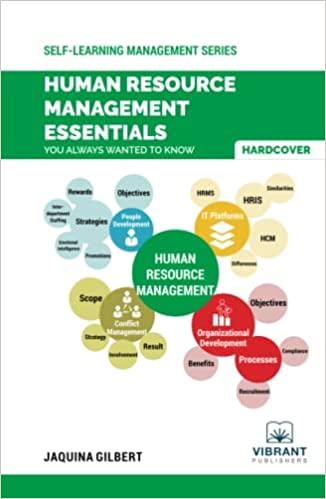Question
12-1. Indicate what data analysis is, and why it is useful. 12-2. Define and differentiate each of the following: (a) descriptive analysis, (b) inference analysis,
12-1. Indicate what data analysis is, and why it is useful.
12-2. Define and differentiate each of the following: (a) descriptive analysis, (b) inference analysis, (c) association analysis, (d) relationships analysis, and (e) difference analysis.
12-3. What is a measure of central tendency, and what does it describe?
12-4. Explain the concept of variability and relate how it helps in the description of responses to a particular question on a questionnaire.
12-5. Using examples, illustrate how a frequency distribution (or a percentage distribution) reveals the variability in responses to a Likert-type question in a lifestyle study. Use two extreme examples that illustrate much variability and little variability.
12-6. Indicate what a range is and where it should be used as an indicator of the amount of dispersion in a sample.
12-7. With explicit reference to the formula for a standard deviation, show how it measures how different respondents are from one another.
12-8. Explain why the mean is an inappropriate measure of central tendency in each of the following cases: (a) gender of respondent (male or female); (b) marital status (single, married, divorced, separated, widowed, other); (c) a taste test in which subjects indicate their first, second, and third choices of Sam Adams Light, Heineken Light, and Michelob Light.
12-9. For each of the cases in question 8, what is the appropriate central tendency measure?
12-10. In a survey on productivity apps, respondents write in the number of apps they have installed in the past six months. What measures of central tendency can be used? Which is the most appropriate and why?
12-11. If you use the standard deviation as a measure of the variability in a sample, what statistical assumptions have you implicitly adopted?
12-12. What essential factors are taken into consideration when statistical inference takes place?
12-13. What is meant by parameter estimation, and what function does it perform for a researcher?
12-14. How does parameter estimation for a mean differ from that for a percentage?
12-15. List the steps in statistical hypothesis testing and the steps in intuitive hypothesis testing. How are they similar? How are they different?
12-16. What does it mean when a researcher says that a hypothesis has been supported at the 95% confidence level?
12-17. Here are several computation practice exercises to help you identify which formulas pertain and learn how to perform the necessary calculations. In each case, perform the necessary calculations and write your answers in the column identified by Your Confidence Intervals or Your Test Results.
Determine confidence intervals for each of the following
Sample Statistic Sample Size Confidence Level Your Confidence Intervals Mean: 150 200 95% Standard Deviation: 30 Percent: 67% 300 99% Mean: 5.4 250 99% Standard Deviation: 0.5 Percent: 25.8% 500 99%
Test the following hypothesis and interpret your findings
Hypothesis Sample Findings Confidence Level Your Test Results Mean = 7.5 Mean: 8.5 95% Standard Deviation: 1.2 n = 670 Percent = 86% p = 95 99% n = 1000 Mean = 125 Mean: 135 95% Standard Deviation: 15 n = 500 Percent = 33% p = 31 99% n = 120
12-18. Alamo Rent-A-Car executives believe that Alamo accounts for about 50% of all Cadillacs that are rented. To test this belief, a researcher randomly identifies 20 major airports with on-site rental car lots. Observers are sent to each location and instructed to record the number of rental-company Cadillacs returned in a four-hour period. A total of 500 are observed, and 30% are observed being returned to Alamo Rent-A-Car. What are the implications of this finding for the Alamo executives belief?
Step by Step Solution
There are 3 Steps involved in it
Step: 1

Get Instant Access to Expert-Tailored Solutions
See step-by-step solutions with expert insights and AI powered tools for academic success
Step: 2

Step: 3

Ace Your Homework with AI
Get the answers you need in no time with our AI-driven, step-by-step assistance
Get Started


